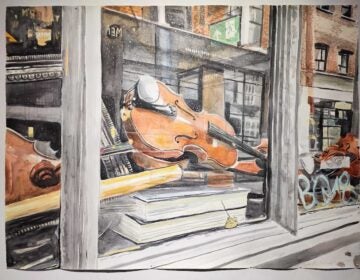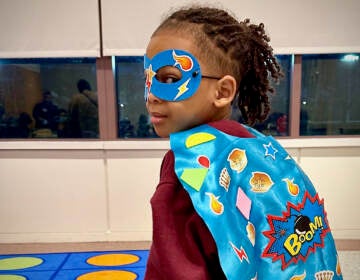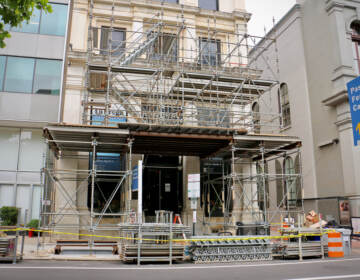‘Forbidden Art’ from concentration camps opens at National Liberty Museum
Ahead of the 75th anniversary of liberating the German concentration camps, the Philly museum displays art created in secret by prisoners.
Listen 4:41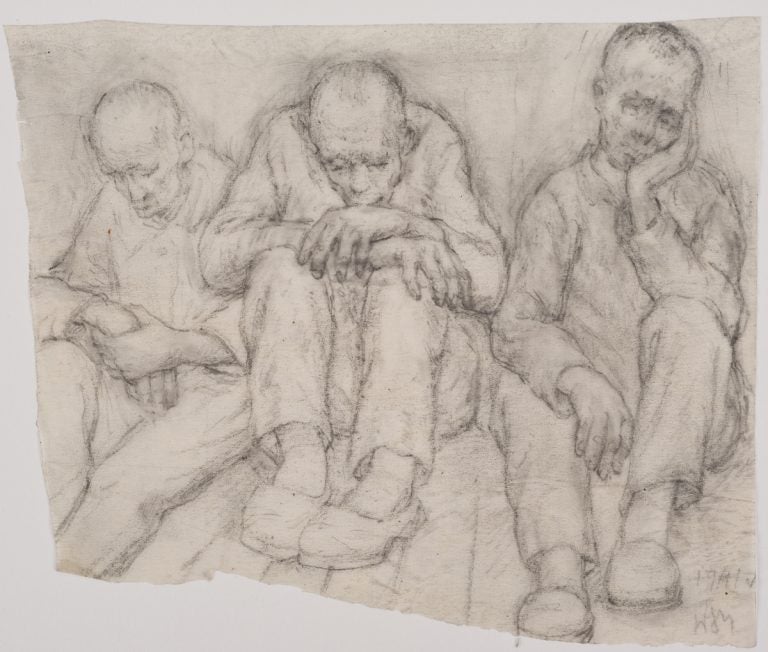
A Day Off, by Włodzimierz Siwierski, Auschwitz 1941 (Auschwitz-Birkenau State Museum)
A young boy dressed in a sailor’s outfit is separated from his father. The separation is witnessed by a man with a Star of David on his shoulder. The son is destined for extermination for the crime of being born Jewish in Germany in the 1930s. The image, framed in wood that is hauntingly reminiscent of the barracks at Auschwitz, is mounted just a few feet away from a page of fairy tales written and illustrated by prisoners. They hoped the fairytales would be smuggled to their children, an effort to preserve the magic and innocence of childhood.
Today, the National Liberty Museum will open “Forbidden Art” — an exhibit of 20 images created by Jewish and Polish prisoners of Auschwitz between 1940 and 1945. While Nazis commissioned some of the art made in the camp, this art was made in secret despite the grave risk to the artists. This exhibition, presented in collaboration with the Auschwitz-Birkenau Memorial Foundation, is part of a larger initiative to spread awareness about the atrocities committed at Auschwitz and to restore and preserve the art, artifacts, and architecture of the former concentration camp.
The exhibit includes art made to document the brutality of Auschwitz and art that contrasts people’s lives during imprisonment with how they lived before. There are works that helped prisoners imagine escaping and even caricatures of German guards, meant to offer humor in the midst of tragedy. Pawel Sawicki, of the Auschwitz-Birkenau Memorial Museum, said the pieces “give a story of each artwork, each artist while building a deeper context of why people created art, what was the meaning of art in Auschwitz,” said Sawicki.
Liberty Museum CEO Gwen Borowski hopes that attendees will learn that being a bystander to bigotry, and failing to intervene, makes you complicit. She wants people to speak out against injustice. “We are not partisan,” she said of the museum. “It’s about protecting this fragile freedom and liberty that we have. It’s art that tells an unbelievable story of resistance and survival and identity.”

Lewis Gantman and Joseph Finkelstein, two Philadelphia board members of the Auschwitz-Birkenau Memorial Foundation, offered Borowski the chance to bring the exhibit to Philadelphia. January 2020 will mark the 75th anniversary of the liberation of the concentration camps. Gantman and Finkelstein hope it honors the memory of those who lived and died at Auschwitz. They describe the former camp as “the largest Jewish graveyard in history” and “a crime scene.”
According to Gantman, Auschwitz has two million visitors a year and gives tours in 22 languages to help educate the world about what happened there. They see the traveling art exhibit as a chance to bring some part of that experience to those who can’t travel to Poland to see the historical site.
Finkelstein, whose parents both survived concentration camps, wants everyone to remember what happened to Jewish people during the 1930s and 40s and resolve never to let it happen again, to anyone. Joseph’s father told him regularly, “You have to fight bigotry and hatred.” He sees the 20 pieces on display at the National Liberty Museum as doing just that, combating hatred by preserving objects and memories it threatened to destroy.
More than one million Jewish people were killed at Auschwitz. Many who did survive found themselves unable to convey the things they endured and witnessed. Finkelstein says his parents suffered great trauma. “It was very painful for them to talk about,” he said.
Gantman and Finkelstein say that the art in the exhibit conveys stories of those who perished at Auschwitz, or survived but were too traumatized to talk about the experience. On January 27, 2020, the 75th anniversary of liberating the camps, a number of Auschwitz survivors will speak about their experiences in the camp. Their speeches will be simulcast at the National Liberty Museum.
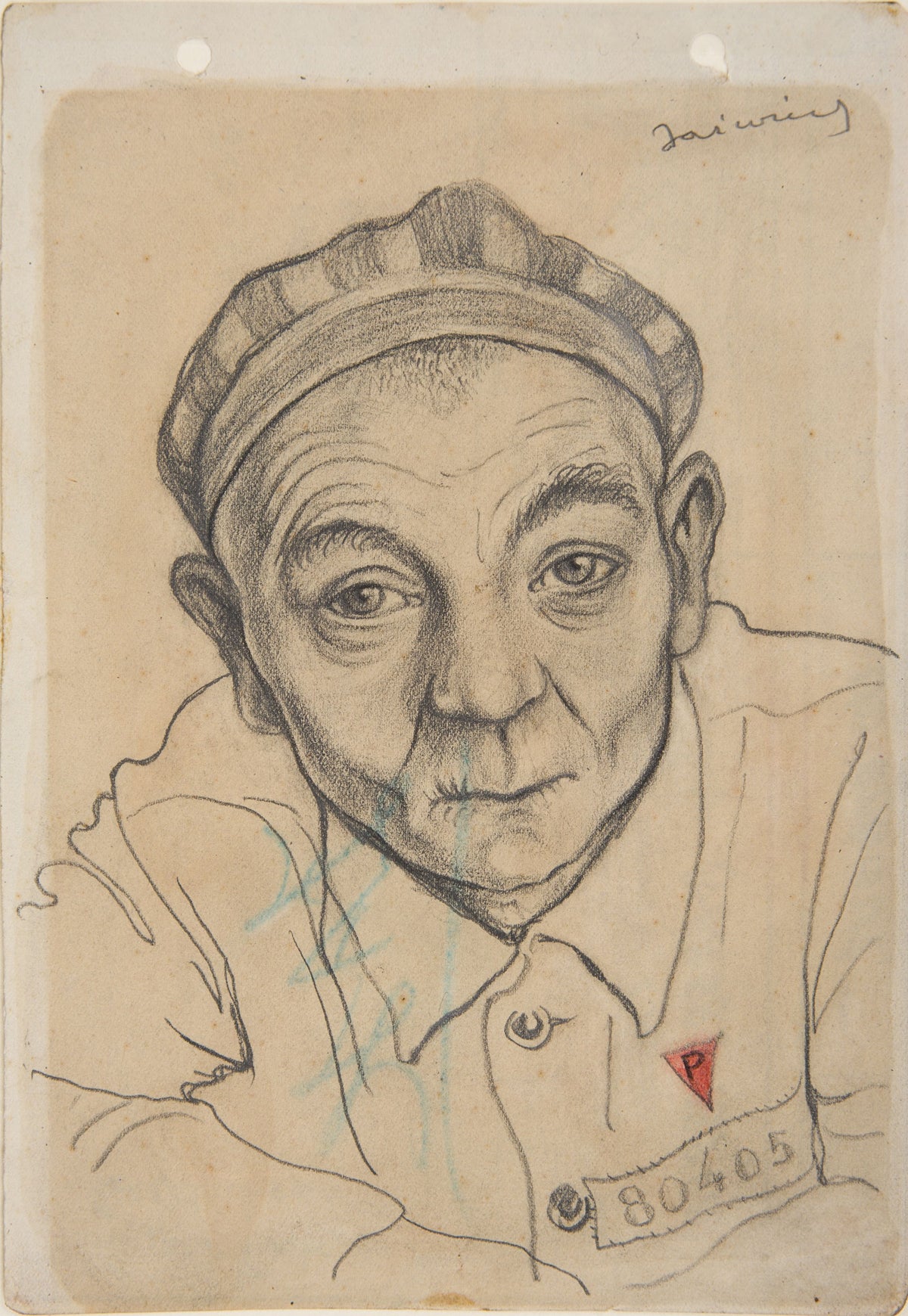
Bill Schwabe, who just turns 96 today, escaped Nazi persecution in 1939. He was just fifteen years old. He now lives at an assisted living facility in Jenkintown. Before becoming refugees and relocating to Philadelphia, the Schwabes were a proud and prominent Jewish family that owned a thriving store in the center of their hometown, Hanau.
“Our store was destroyed in 1938 during Kristallnacht,” Schwabe said, “One very faithful employee helped my mother pick up the pieces.”
Kristallnacht, known as the “Night of Broken Glass,” was a night in November of 1938 where a mob murdered over 90 Jews and vandalized Jewish-owned stores, buildings, and synagogues.
Although the Schwabe family escaped, they were far from unscathed. Bill’s father spent time in a concentration camp. His mother developed PTSD and suffered from lifelong anxiety. His father’s role became comforting her and reminding her that they were safe.
When Gantman and Finkelstein discovered that the exhibit’s opening, Schwabe’s birthday and Veteran’s Day all fall on the same day, they offered to provide Schwabe with transportation to and from the museum and a private tour. Schwabe hopes to feel well enough to take them up on the offer.
WHYY is your source for fact-based, in-depth journalism and information. As a nonprofit organization, we rely on financial support from readers like you. Please give today.


